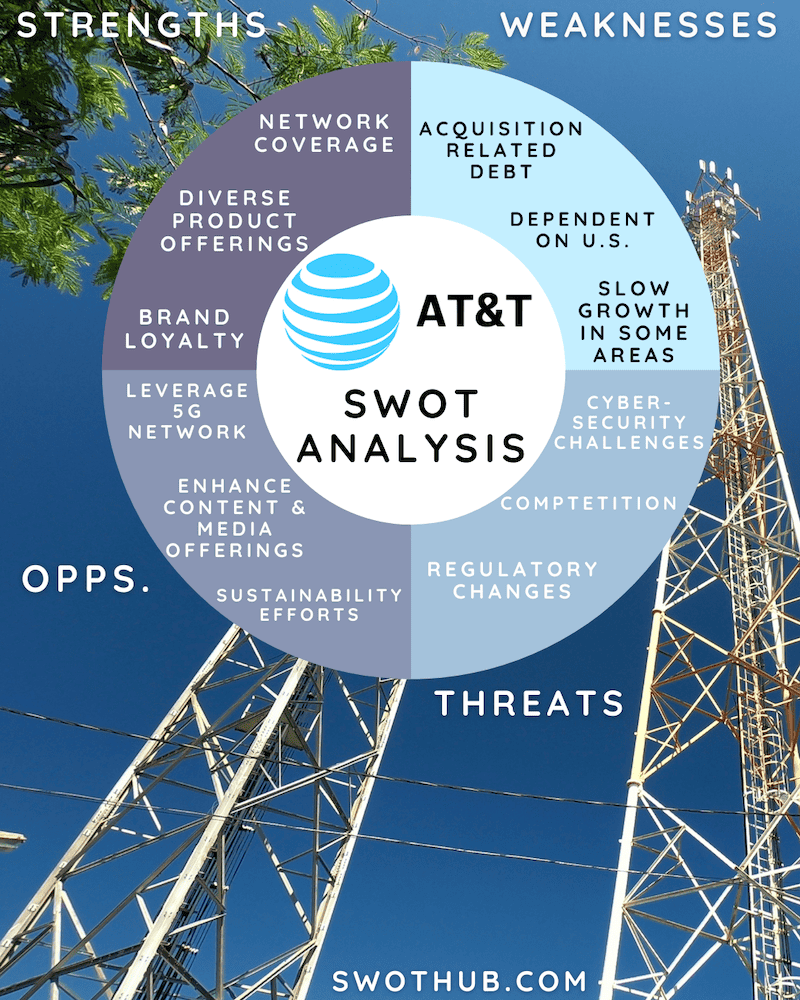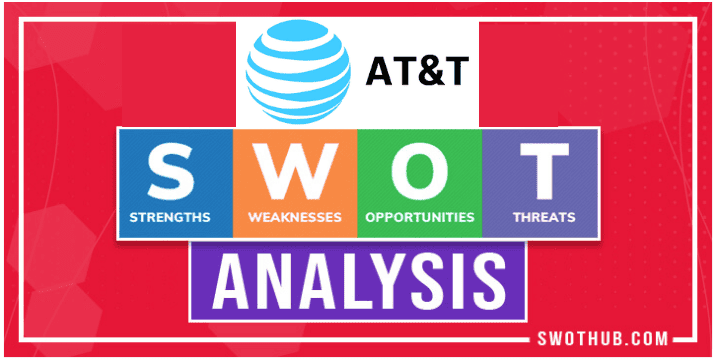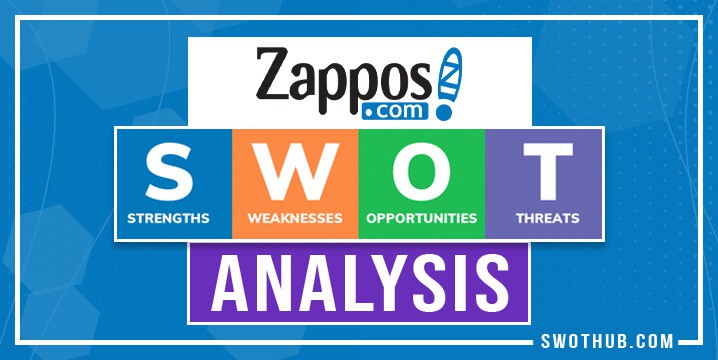Let’s face it, without Wifi, computers, and data movement, our current world would be nothing! In this AT&T SWOT analysis, we look at AT&T, a global leader in telecommunications, media, and technology with a rich history and a dynamic presence in the market. This AT&T SWOT analysis will delve into the company’s strengths, weaknesses, opportunities, and threats, providing valuable insights into this thriving communications conglomerate.
Table of Contents
History of AT&T
In an AT&T SWOT analysis, Alexander Graham Bell founded AT&T in 1885 as the American Telephone and Telegraph Company with the purpose of developing a network of long-distance telephone lines. The corporation was a trailblazer in the construction of the United States’ communication infrastructure, connecting cities and towns across the country.
AT&T soon established itself as a dominant force in the telecommunications market through strategic investments, technological advances, and government cooperation.
In the second half of the twentieth century, AT&T expanded its offerings to cover not only the telephone but also the internet and media. The corporation encountered considerable regulatory hurdles, resulting in its disintegration in 1984, only to reconsolidate over time through numerous mergers and acquisitions.
AT&T has evolved in recent years, acquiring companies such as DirecTV and Time Warner and investing in cutting-edge technology such as 5G. As of 2023, AT&T is a multinational company with a wide portfolio spanning telecommunications, media, and technology, maintaining its position as a global market leader.
SWOT Analysis of AT&T At-A-Glance :
| Company | AT&T, Inc. |
| Industry | Telecommunications, Media, and Technology |
| Founder | Alexander Graham Bell |
| Year founded | 1885 |
| CEO | John Stankey |
| Headquarters | Dallas, Texas, USA |
| Number of employees | Approximately 230,000 |
| Revenue (FY 2022) | $171 billion +/- (estimated) |
AT&T SWOT Analysis:
A SWOT analysis is a framework used to assess a company’s competitive situation and to create strategic planning. By taking AT&T’s strengths and weaknesses, its threats, and its opportunities into account, we may better gain in-depth knowledge about the company. In this article, we’ll be taking a look at AT&T’s SWOT framework to better understand its competitive position and potential for future growth. See how AT&T competitors fare against them and learn about AT&T’s Strengths, weaknesses, opportunities, and AT&T threats.
AT&T SWOT Analysis Strengths:
The areas where a company excels above average or in a manner that distinguishes it from its rivals are its strengths. AT&T’s strengths are outlined in this AT&T SWOT analysis. In a SWOT analysis of AT&T, some of its strengths compared to competitors include:
Extensive network coverage and infrastructure: AT&T’s sizable network, which spans the entire world, offers dependable services. They have a competitive advantage thanks to their wide coverage, which draws clients looking for constant connectivity. Their infrastructure investment guarantees quality and establishes them as a leader in the sector.
Diverse product and service portfolio: AT&T’s varied offerings meet a range of client needs, from mobile services to entertainment. Through diversification, a company can increase its revenue streams and lessen its reliance on a single market or industry.
Strong brand recognition and consumer adherence: AT&T’s name is a byword for dependability and excellence. Their emphasis on client pleasure has encouraged loyalty, resulting in a steady customer base that helps generate steady income.
Strategic acquisitions and partnerships: As part of their growth plan, AT&T joins forces with businesses whose objectives mesh with their own. Through these actions, they have been able to improve their offerings, reach a wider audience, and stay one step ahead of the competition.

AT&T SWOT Analysis Weaknesses:
The weaknesses of a company are those that limit its potential, make it less competitive, and prevent it from achieving its goals. In this section of the AT&T SWOT analysis, we’ll look at AT&T’s weaknesses. In an AT&T SWOT analysis, some of their weaknesses compared to competitors include:
High levels of acquisition-related debt: While acquisitions have accelerated growth, they have also resulted in large debt. This financial strain may have an impact on their capacity to invest in new opportunities and their overall financial stability.
Dependence on the saturated U.S. market, which exposes them to risks related to market saturation. Geographic diversification could reduce this risk and create new growth opportunities.
Difficulties merging acquired companies: At times, integrating acquired companies into the current company structure has proven to be difficult. These challenges can prevent the predicted synergies from materializing and may result in inefficiencies and higher costs.
Slower growth in some business segments: Compared to other business segments, some of AT&T’s have seen slower growth. This uneven growth can be a symptom of deeper problems that must be resolved in order to guarantee long-term success.
AT&T SWOT Analysis Opportunities:
AT&T exists in a world full of opportunities. The following portion of the SWOT analysis of AT&T will examine some of AT&T’s opportunities compared to competitors, including:
Expansion into emerging markets: There is untapped growth potential in emerging markets. AT&T can reach new customers, diversify its revenue stream, and lessen its reliance on oversaturated markets by extending into these areas.
Leveraging 5G technology and IoT: The emergence of 5G and the Internet of Things (IoT) opens up possibilities for innovation. By creating new goods and services, improving consumer interactions, and remaining at the cutting edge of technical developments, AT&T can benefit from these trends.
Enhancing content and media offerings: AT&T’s presence in the media presents an opportunity to improve content offerings. They can enhance engagement and draw in more subscribers by producing great content and taking advantage of cross-platform synergy.
Focusing on sustainability and social responsibility can improve AT&T’s brand image. They can gain the trust and loyalty of customers who place a high priority on these concerns by adhering to societal standards in an AT&T SWOT analysis.
AT&T SWOT Analysis Threats:
Threats pose a risk to every company’s stability and profitability. Let us address some of the threats that are important to examine at AT&T.
Intense competition from rivals like Verizon: The telecom sector is extremely competitive. In order to keep its advantage over competitors like Verizon, AT&T must continuously innovate and plan strategically.
Regulatory challenges and compliance: It might be difficult to comply with constantly changing regulations. Legal problems, penalties, and reputational harm could result from breaking these regulations.
Technological disruptions and cybersecurity risks: Quick advancements in technology can make things obsolete. Additionally, client trust and data integrity are in danger from cybersecurity vulnerabilities. Constant watchfulness and investment in security measures are necessary to stay ahead of these issues.
Economic fluctuations and global uncertainties: Consumer spending and business operations may be impacted by these factors. For stability and growth to be maintained, it is essential to be ready to negotiate these uncertainties.
AT&T’s Competitors:
In a SWOT analysis of AT&T, its competitors would fall under the “threats” category. Here are some of AT&T’s main competitors in the telecommunications industry:
Companies that compete with AT&T include:
- Verizon
- T-Mobile
- Comcast, and
- Charter Communications
AT&T SWOT Analysis: Conclusion and Recommendations:
To maintain its position as a leader in the telecommunications sector, AT&T must concentrate on four crucial strategies:
- Reduce Debt: AT&T can free up funds for investing in growth possibilities by controlling and reducing its high levels of debt.
- Expand Internationally: Investigating emerging markets can help you diversify your revenue sources and lessen your reliance on the saturating U.S. market.
- Leverage New Technologies: AT&T can remain at the forefront of innovation by investing in 5G, IoT, and other technical developments.
- Improving customer experiences can be accomplished by putting a strong emphasis on client satisfaction and developing engaging content.
- Emphasize social responsibility and sustainability. Aligning AT&T’s brand with these principles will help it grow.
AT&T FAQs
Who owns AT&T?
AT&T is a publicly traded company, so it is owned by shareholders. There is no single majority owner.
Does AT&T own DirecTV?
Yes, AT&T acquired DirecTV in 2015, expanding its media and entertainment offerings.
What is AT&T’s 5G coverage?
AT&T has been actively rolling out 5G coverage across the United States. The coverage varies by location, and updates can be found on AT&T’s official website.





